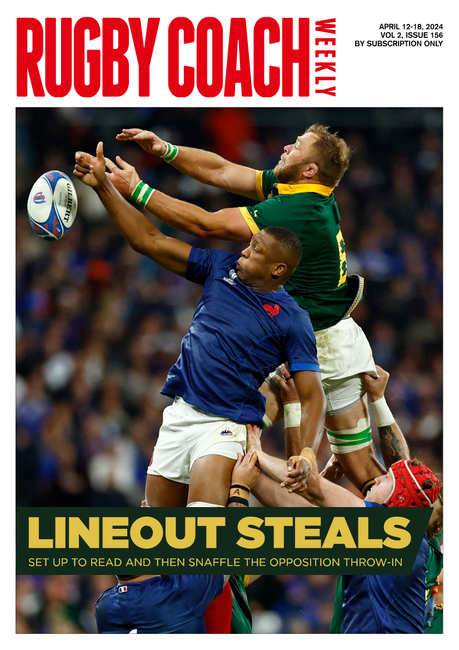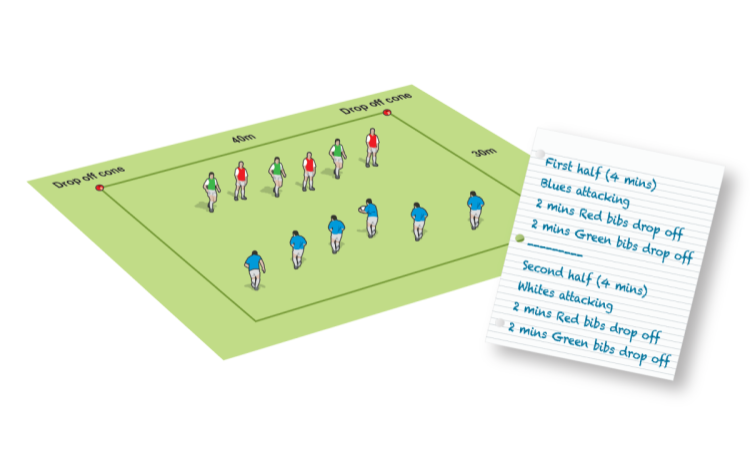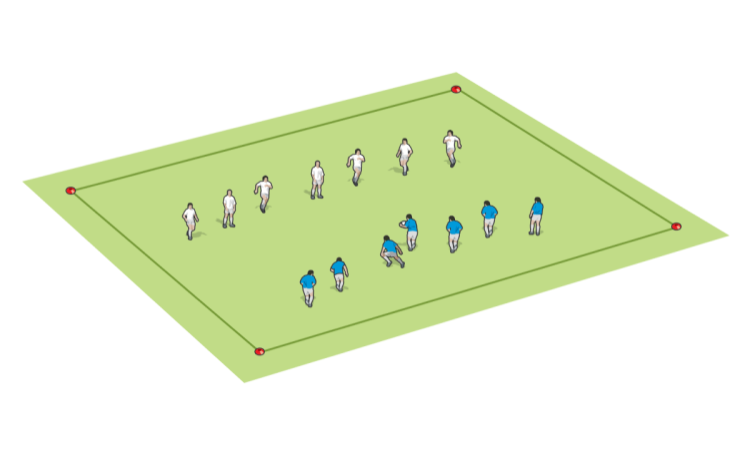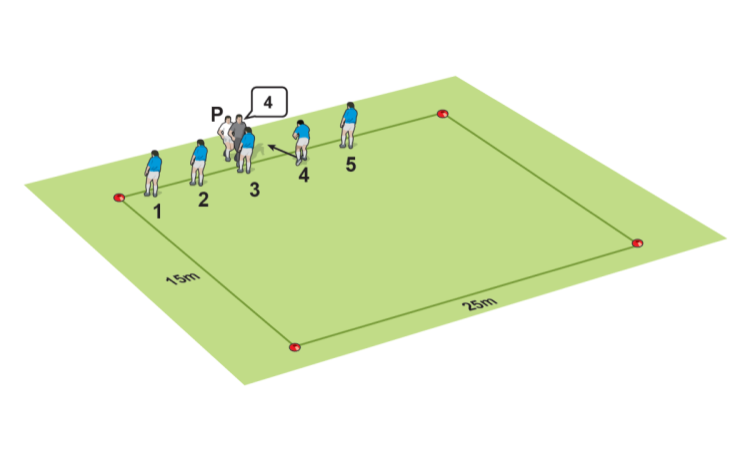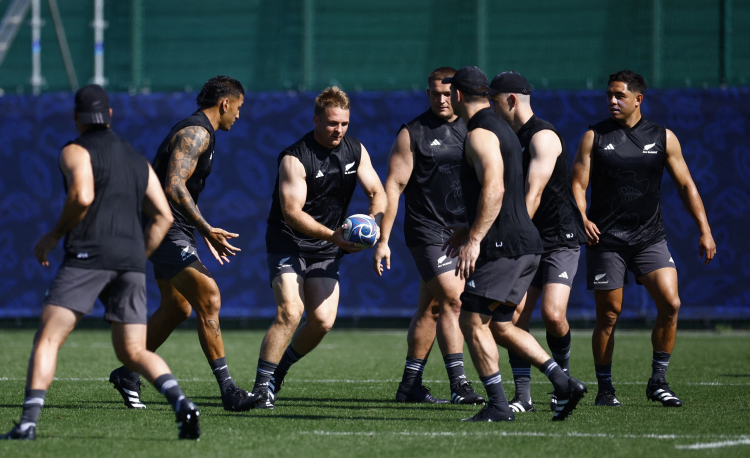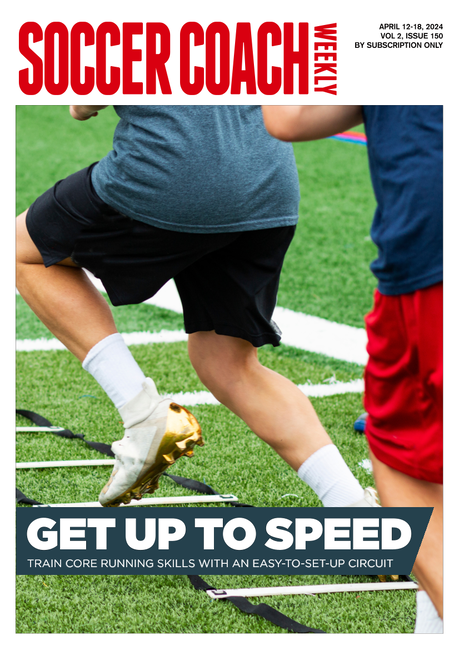You are viewing
1 of your 2 free articles
Blindside mismatches game
Small-Sided Gamesby Ian Diddams
Mismatches happen quickly and players need to judge when to go for it and when not to. There’s no better way to create lots of these scenarios than through a game.
This game creates lots of small attacking corridors that replicate a blindside. Players can then attack either side of breakdowns through overlaps, size and pace mismatches.
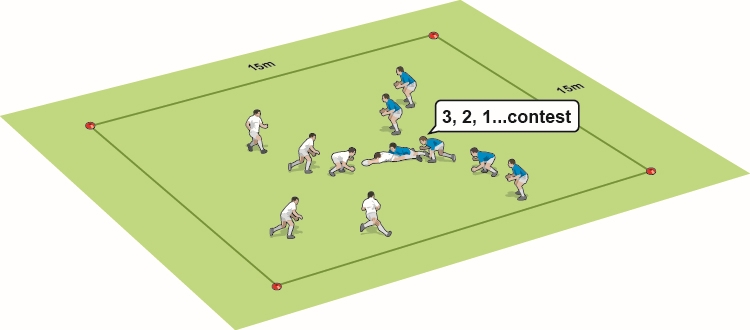


A: A faster player should aim to take on the defender and then run for the space.
B: Bigger players can run at the spaces and then aim to ride the tackles.
This game creates lots of small attacking corridors that replicate a blindside. Players can then attack either side of breakdowns through overlaps, size and pace mismatches.

- Play 6 v 6 full contact in a 15m box,
- Start attacks from one end of the square with a tap kick.
- Teams take it in turns to attack for three minutes.
- Tackles are contestable by the defence after three seconds (allowing the attack to clear the ball or send in a man to protect the ball if they need more time).
- The attackers should seek to create mismatches by running large forwards at small backs, fast backs at slow forwards or making overlaps.
- Errors and mistakes by the attackers see them restart their attack again.
- Replicate a weak tackler that may provide another mismatch by placing a defender in a different coloured bib, who is not allowed to actually tackle.

- The attack aim to exploit overlaps with quick passing and straight running.
TECHNIQUE

A: A faster player should aim to take on the defender and then run for the space.
B: Bigger players can run at the spaces and then aim to ride the tackles.
- Look up if you are not in the tackle area to see where the mismatches are.
- Attack the defenders and not the space first, before stepping into the space.
- Call for quick ball when the mismatch is on.
Related Files
blindside-mismatches-game.pdfPDF, 353 KB
Newsletter Sign Up
Coaches Testimonials

Gerald Kearney, Downtown Las Vegas Soccer Club

Paul Butler, Florida, USA

Rick Shields, Springboro, USA

Tony Green, Pierrefonds Titans, Quebec, Canada
Subscribe Today
Be a more effective, more successful rugby coach
In a recent survey 89% of subscribers said Rugby Coach Weekly makes them more confident, 91% said Rugby Coach Weekly makes them a more effective coach and 93% said Rugby Coach Weekly makes them more inspired.
Get Weekly Inspiration
All the latest techniques and approaches
Rugby Coach Weekly offers proven and easy to use rugby drills, coaching sessions, practice plans, small-sided games, warm-ups, training tips and advice.
We've been at the cutting edge of rugby coaching since we launched in 2005, creating resources for the grassroots youth coach, following best practice from around the world and insights from the professional game.

